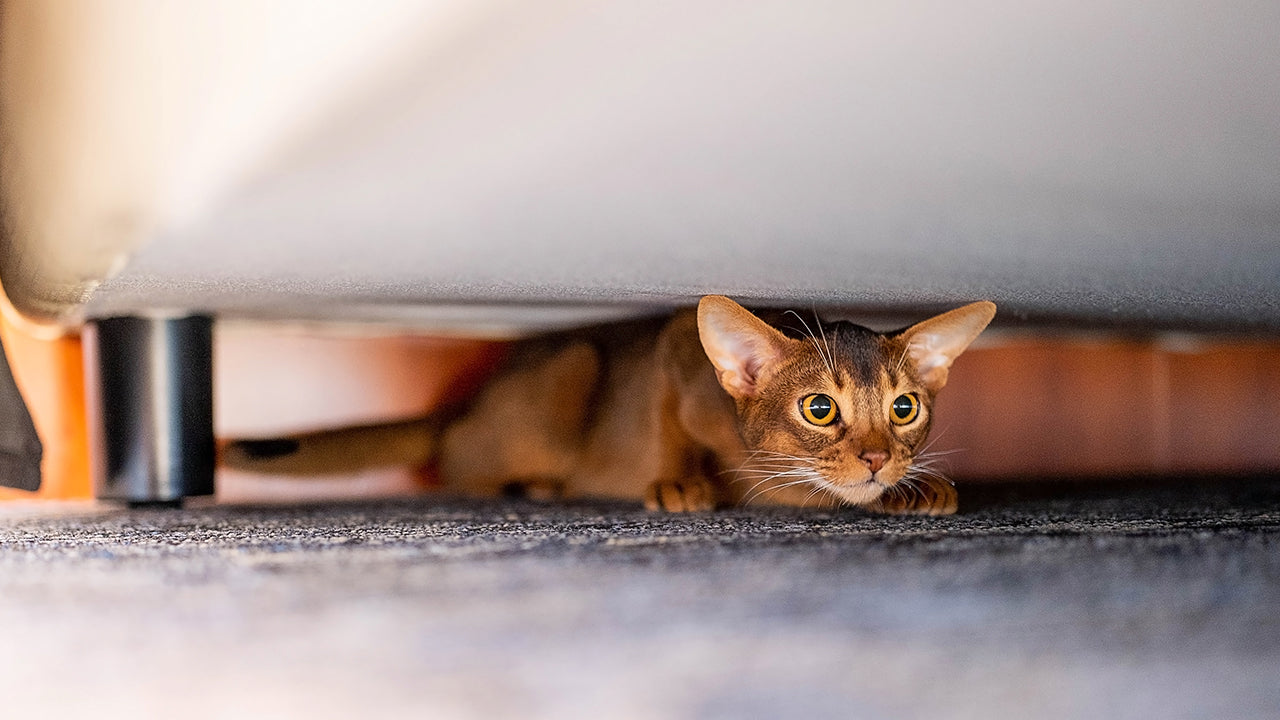You turn around — and your cat is gone. Not a paw in sight. After some frantic searching, you find those glowing eyes peeking out from a drawer or box like it’s the most normal thing in the world.
Sound familiar? Cats have a long history of “playing hide-and-don’t-seek,” and it’s more than just a cute quirk — it’s deeply rooted in their instinct and psychology.
Let’s dive into why your cat keeps disappearing, and when you should be concerned.
🧬 It’s in Their DNA
Cats are both hunters and prey in the wild. That means they’re wired to hide — whether it’s stalking a bird or avoiding a bigger predator.
Even indoor cats retain this instinct. Enclosed, quiet spaces give them a sense of control, security, and calm. Research shows that enclosed hiding spaces can reduce feline stress levels, especially during change or chaos.
😼 6 Common Reasons Cats Hide
| Reason | What It Looks Like | What To Do |
| 1. Stress | Hides during visitors, loud noises, or moving | Use pheromone diffusers; create cozy, quiet hiding zones |
| 2. Illness or Pain | Hides for over 24 hours, avoids food or water | šØ Visit the vet immediately |
| 3. Territory Conflict | Avoids certain areas or other cats in multi-cat homes | Follow the "N+1 rule" ā€” one extra bowl, bed, litter box per cat |
| 4. Overstimulation | Retreats suddenly after petting or play | Give space; let your cat recharge in peace |
| 5. Fear | Hides during thunderstorms, vacuuming, or unfamiliar scents | Offer a dark, safe shelter with low noise and traffic |
| 6. Curiosity | Crawls into bags, boxes, furniture gaps | Normal behavior ā€” just cat-proof risky hiding spots |
Not all hiding means something is wrong — but it’s good to understand what’s going on beneath the surface.
🛑 Red flag: If your cat is hiding and also skipping meals or acting lethargic, it’s vet time.
🏆 Top 10 Weirdest Cat Hiding Spots
Based on stories from cat parents around the world, here are some of the most “how did you even get there?” spots:
- Behind the microwave cabinet
- Inside the kitchen exhaust pipe
- Cosplaying as a plant in a flowerpot
- Between the mattress and box spring
- In suitcases, laundry baskets, and drawers
- Inside the couch lining
- Behind heavy books on shelves
- Inside a backpack
- Wrapped in curtains, perfectly still
- Buried under freshly folded laundry
🏡 How to Create the Perfect Hiding Spot (So They Stop Using Yours)
Instead of fighting the behavior, embrace it — and make it safe.
✔️ Step 1: Go Vertical
Install cat trees or window shelves. High-up spots = happy, secure cats.
✔️ Step 2: Build the Perfect Hideaway
A great cat hideout includes:
Privacy (semi-enclosed)
Visibility (small peek-hole)
Exit route (never trap them inside)
✔️ Step 3: Scent Matters
Skip strong cleaners like citrus or mint. Instead, line hideouts with old T-shirts or blankets that smell like you — it makes cats feel calm and safe.
😻 It’s Not Rejection — It’s Recharging
Your cat hiding isn’t a personal snub. It’s just their way of feeling safe, in control, or taking a break from sensory overload. Respecting their space will actually build trust over time.
So the next time your feline vanishes into thin air — smile. They’re not gone. They’re just recharging in their secret lair, plotting their next snack mission.
💬 Tell us: What’s the weirdest place your cat has ever hidden?

